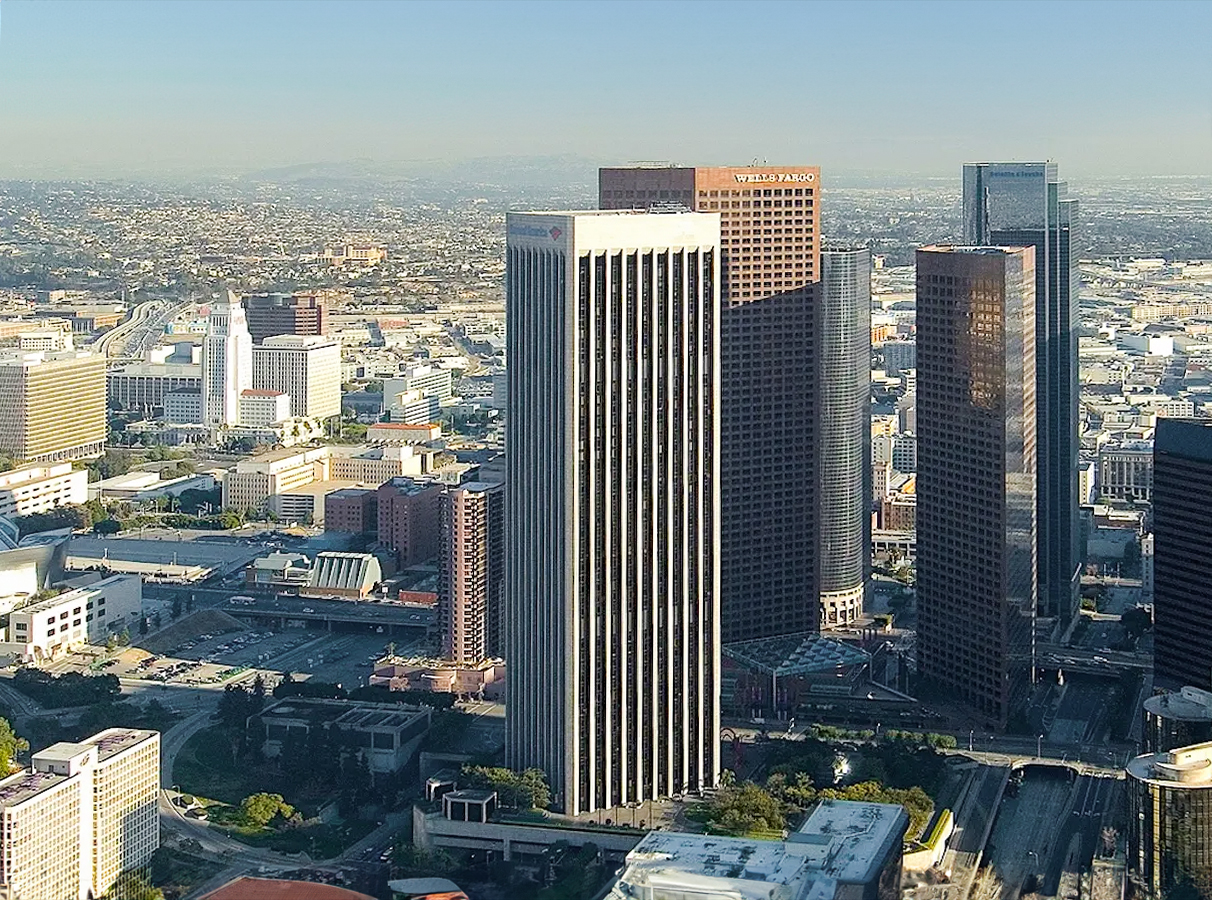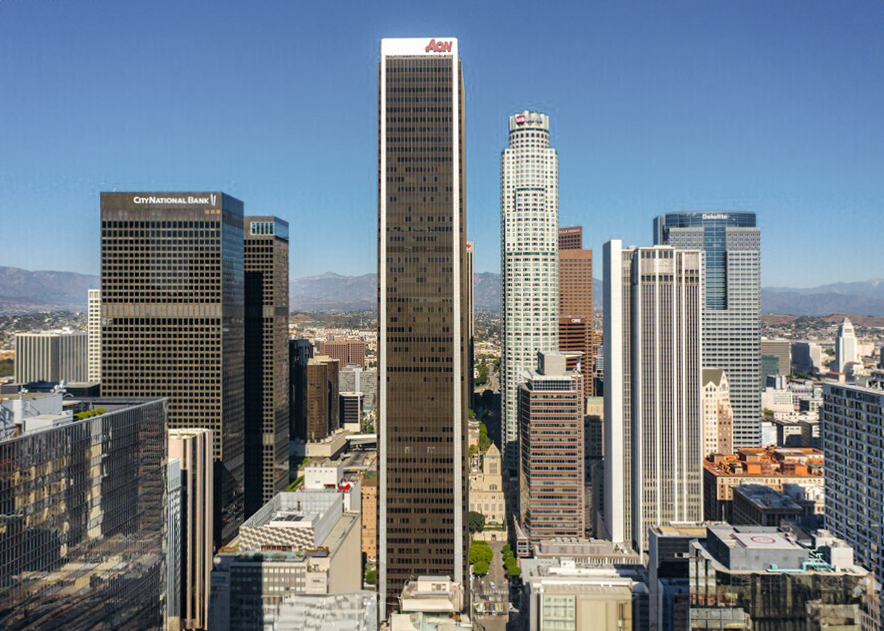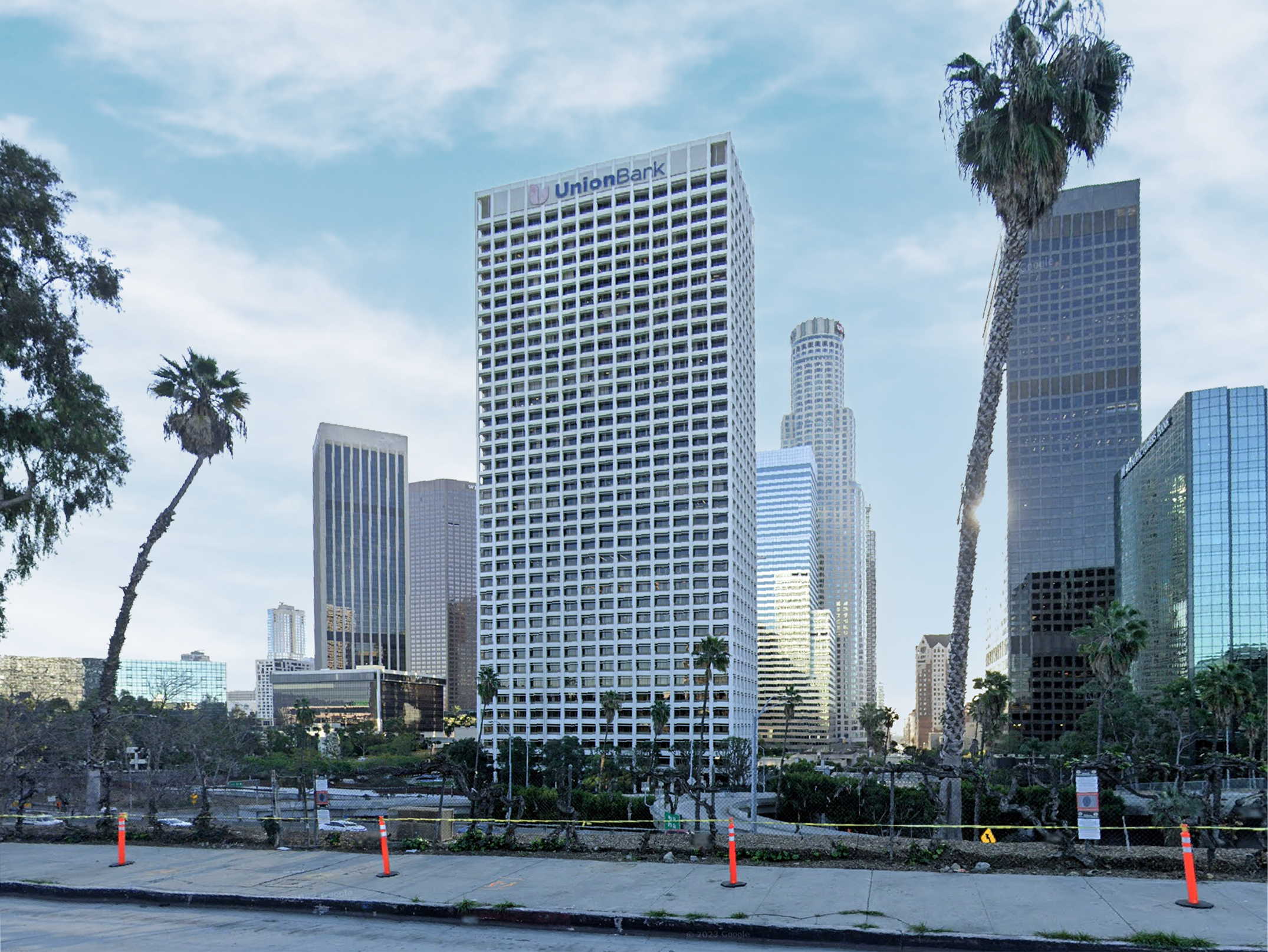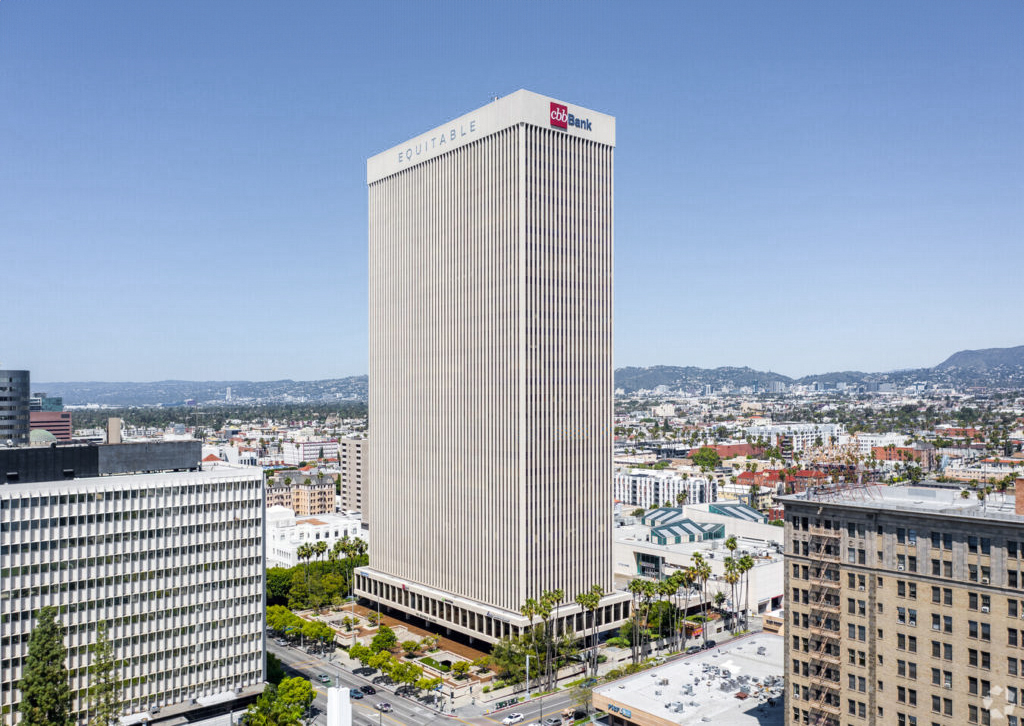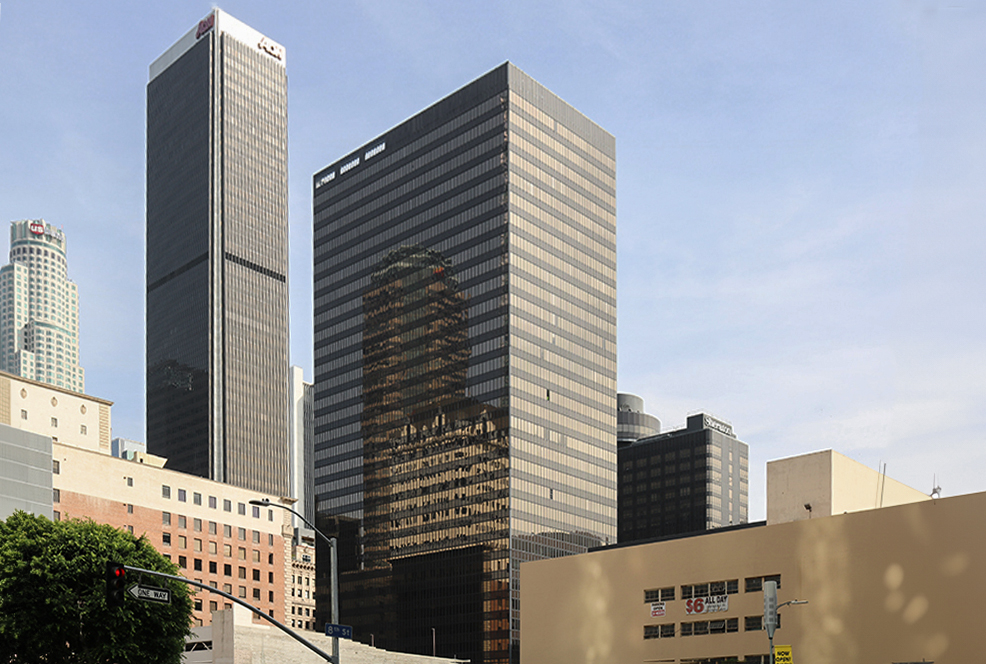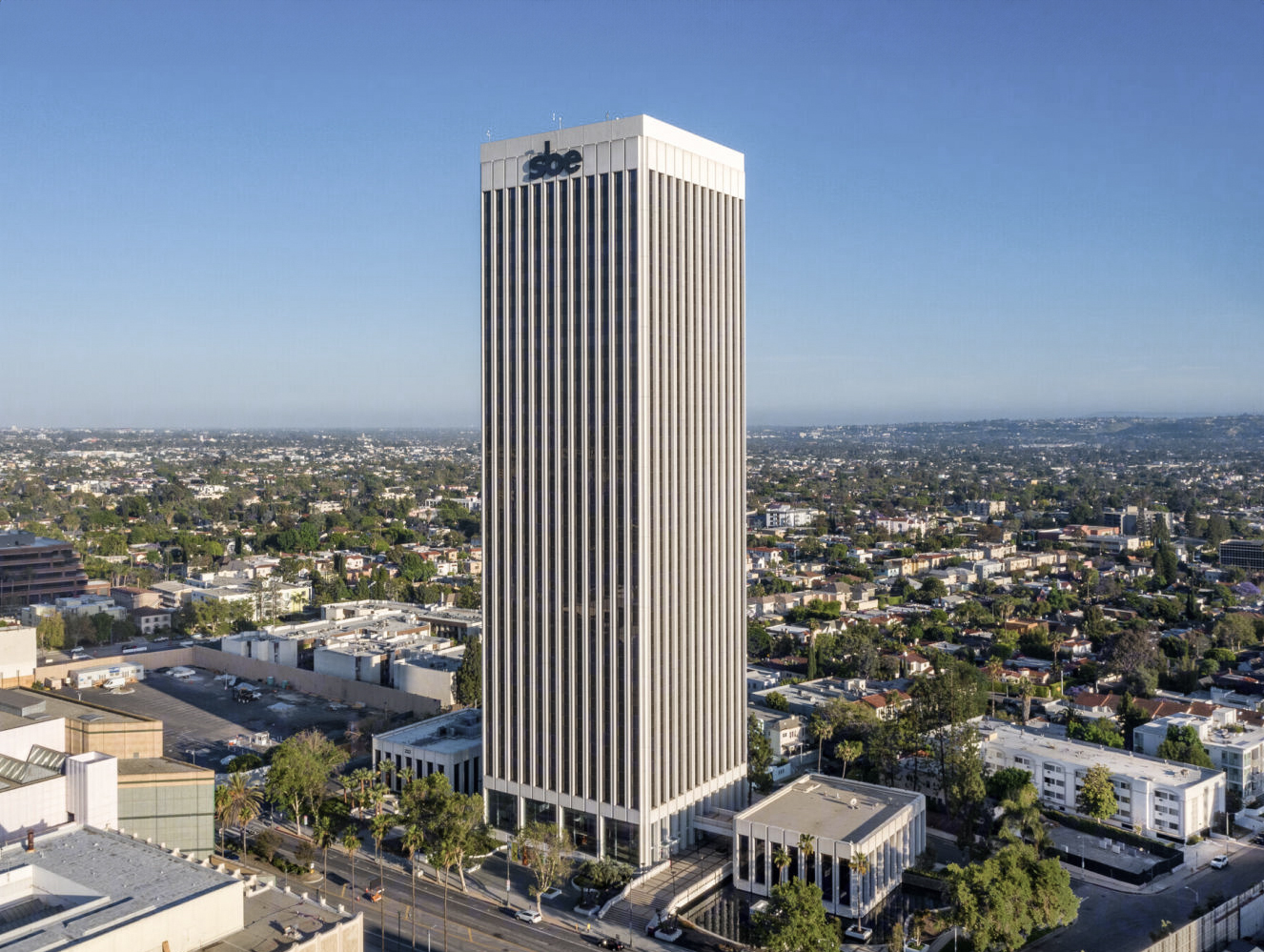The AT&T Center is an International Style skyscraper designed by William Pereira & Associates, and built between 1962 and 1965 in Los Angeles, CA.
AT&T Center is not the only name you might know this building by though. It is common for companies to want to attach their names to iconic buildings when they move in, or for the general public to come up with nicknames, and this one is no exception. The AT&T Center is also known, or has been known as, USC Tower, Transamerica Tower, or Occidental Life Building.
Its precise street address is 1150 South Olive Street, Los Angeles, CA. You can also find it on the map here.
The building along with a second, 10-story building, make up what's known as South Park Center.
The building underwent a major restoration in 2008. The architect commissioned to undertake this restoration was Gensler.


